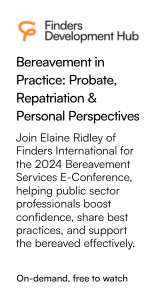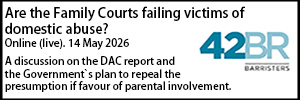How not to conduct a placement application
- Details
A recent case contains some very useful observations about placement applications and a good analysis of the case law, writes Anne Chavasse.
In London Borough of Bexley v B and A : Ref ZE 19 C00405 HHJ Lazarus was adjudicating upon the local authority's application for a placement order in respect of a 4 year old girl, A, who sadly had significant and complex developmental, educational and physical needs. The parents had struggled to cope with her needs and about 6 months before the hearing they requested a local authority foster placement for her.
A was part of a large, functional family with relatives in both this country and abroad. Her parents attended contact regularly, A was manifestly pleased to see them and the parents were supportive and cooperative with the FCs. The wider family were also involved in good quality contact.
The parents did not speak English but could communicate with A in their own language. The family had a rich family life and a cultural and religious heritage that was very important to them.
The local authority care plan, supported by the Guardian, was adoption with minimal direct contact and some indirect contact.
HHJ Lazarus identified many deficiencies in the local authority's care planning and the lack of important considerations including:
- A’s rich, national, ethnic, linguistic, cultural and religious identity and heritage
- Indirect contact would become meaningless to A as she lost her access to the language spoken by her parents and some of the wider family
- Harms and losses to A of losing all legal connection and meaningful contact with her birth family
- Close and meaningful relationship that A had with the extended family
- The family’s commitment to A and support of the FCs
- The local authority presented an almost entirely negative view of the birth family and the current arrangements.
In cross examination the social worker conceded that the child permanence report (CPR) did not adequately analyse these issues which were relevant to A’s welfare and disproportionally focused on the negatives relating to her family without a balanced approach.
The Judge found that:
- The local authority evidence failed to balance the positives as well as the negatives in the available options.
- The local authority planning had hardly gone further than “Given her age, the only permanency option viable for A is adoption”. It was a skewed and highly partial approach.
- The social worker had failed to focus on A’s needs and characteristics as opposed to generalised assertions about the advantages of adoption for A, devoid of analysis and not backed up with evidence.
- The social worker’s reaction to the suggestion that family contact would promote her welfare was that it would narrow the pool of prospective adopters.
In addition the social worker who completed the CPR did not have the qualifications required by the Adoption Reports Regulations 2005 Reg 3 The Judge found the local authority's assertion that she had been supervised by a manager with the appropriate qualifications unconvincing.
The Agency Decision Maker’s decision was also devoid of analysis.
Practitioners may find the analysis of the case law by HHJ Lazarus, relating to placement applications, useful when preparing to oppose such applications. In addition, the Judge's criticism of the local authority's negative approach to the family and failure to highlight the positives that the family had to offer, may resonate with practitioners when looking at the approach of some social workers to care planning.
Ann Chavasse is a barrister at St Ives Chambers. She can be contacted












































